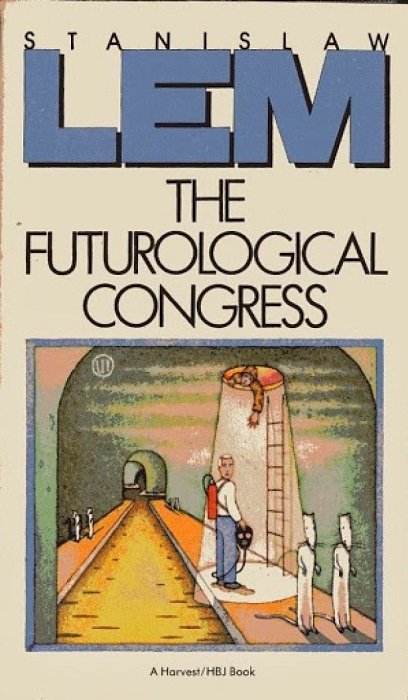Polish writer Stanislaw Lem published a stimulating dystopia where feelings of human beings will be manipulated in the future. The book The Futurological Congress (1971) depicts a scenario in the throes of a massive population explosion that results in an excess of papers and presenters too numerous to allow for full presentations in the congress. The congress features demonstrations, riots and social violence against the government while introducing a flying building consisting of eight hundred flats with maternity wards, kindergartens, schools, shops, museums, zoos, theatres, cinemas, crematoriums and, of course, forty TV channels. The population explosion drives humankind into “discouraging persuasively and policely, full-scale deeroticization, compulsory celibacy, onanism…”. One of the presents comes to suggest that the following stage of civilization would be cannibalism.

Reading the work by Stanislaw Lem The Futurological Congress (1971) is a journey into the possibility of seeing our future as if we were speakers in a congress of futurology. The first thing that we can enthusiastically state is that we are a few years away from spending our holidays in space, a satellite or spaceship spinning around planet Earth. Some architects will suggest, mirroring the Chicago’s town council, the creation of balanced town development based on bacteria control. Videogames have established themselves as 3-D parallel realities, as currently suggested by experts. Medicine will sketch out a future where our life expectancy will increase from the current Spanish average of 82.5 years to 120.
Futurologists would begin such congress heralding a better world, light years away from Lem’s catastrophic outlook. Such futurologists could be described as techno-optimistic, due to their view of a contradiction-free future. At the opposite end, a numerous group of techno-pessimistics will outline a future, drifting from one technology to another that will deteriorate the human condition. The doomsayers, reluctant to not only changes but also unleashed and unsupervised technological euphoria, will point out to problems in an ageing European population, unable to care for the elderly, immersed in low democratic values that will impact negatively on freedom of expression and circulation of people. They would denounce the vulnerable position of citizens before the big communication corporations that will trade personal data, present and past. Robotics, sensors, drones and tracking technology via mobile phones will be seen as limits to our freedom rather than security enhancements.

Presenters in the congress would then be split into those in favour and those against; into opponents y collaborationists. Similar to scientific and technological optimism of the late 19th century, techno-optimists will coexist with those who believe in spirits, just like those who would use photography to capture auras. The difference would be that, back then, it was still possible to redirect the evils of bad technological implementation, as it affected a small number of people. Nowadays, any great innovation is available to everyone everywhere in the world. The congress should then wonder whether the reduced need of human work before the evolution of robotics will result in even more social injustice, or how the welfare state will be financed, or where will social media fail, where privacy begins and ends, what are the consequences of our inability to control our own data, and how can we limit the monopoly of knowledge, or how can we set ethical limits to genetic manipulation, or who will supervise money flows, or who will control conflicts and, as a consequence, what is the power of diplomacy in solving them. Nowadays, the congress of futurology would be very different to the humorous, inflammatory and thought-provoking future narrated in Lem’s book. Only one aspect would coincide: thousands of people requesting for humankind to be able to cope with the present before looking into the future.




















